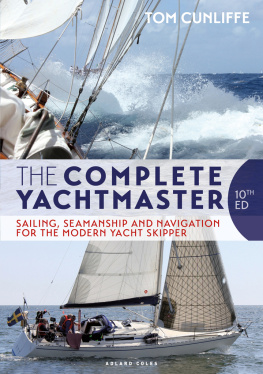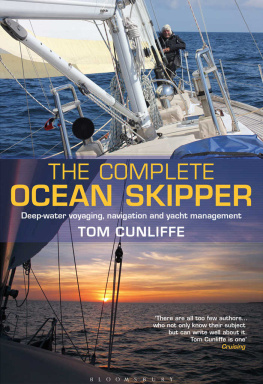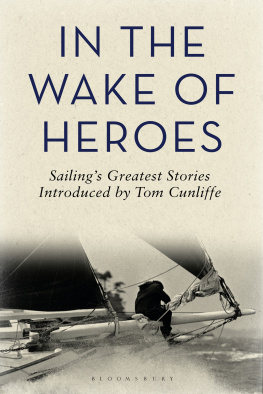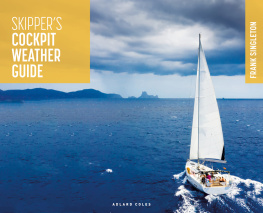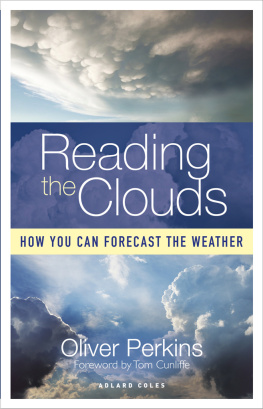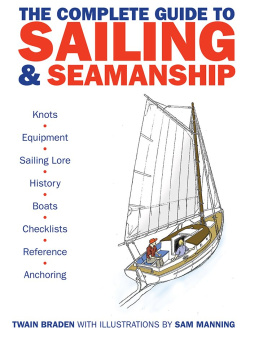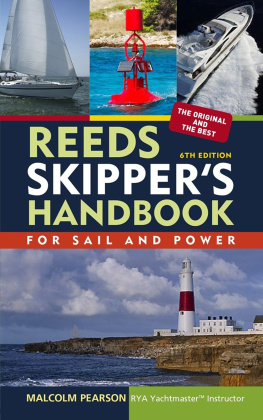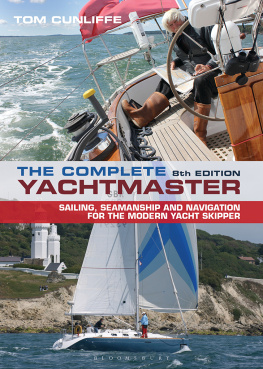
This product has been derived in part from material obtained from the UK Hydrographic Office with the permission of the UK Hydrographic Office, Her Majestys Stationery Office.
Charts and tidal information British Crown Copyright, 2021. All rights reserved.
THIS PRODUCT IS NOT TO BE USED FOR NAVIGATION.
Notice: The UK Hydrographic Office (UKHO) and its licensors make no warranties or representations, express or implied, with respect to this product. The UKHO and its licensors have not verified the information within this product or quality assured it.
ACKNOWLEDGEMENTS
The author gratefully acknowledges the assistance of Alan Watson and John Hart, whose wisdom on the subject of radar was freely shared for the benefit of us all.
ADLARD COLES
Bloomsbury Publishing Plc
50 Bedford Square, London, WC1B 3DP, UK
29 Earlsfort Terrace, Dublin 2, Ireland
This electronic edition published in 2021 by Bloomsbury Publishing Plc
BLOOMSBURY, ADLARD COLES and the Adlard Coles logo are trademarks of Bloomsbury Publishing Plc
First edition 1994
Second edition 1997
Third edition 2000
Fourth edition 2003
Fifth edition 2006
Sixth edition 2008
Seventh edition 2010
Eighth edition 2014
Ninth edition 2017
This edition published 2021
Copyright Tom Cunliffe, 1994, 1997, 2000, 2003, 2006, 2008, 2010, 2014, 2017, 2021
Photographs Tom Cunliffe, 2021
Tom Cunliffe has asserted his right under the Copyright, Designs and Patents Act, 1988, to be identified as Author of this work
All rights reserved
You may not copy, distribute, transmit, reproduce or otherwise make available this publication (or any part of it) in any form, or by any means (including without limitation electronic, digital, optical, mechanical, photocopying, printing, recording or otherwise), without the prior written permission of the publisher. Any person who does any unauthorised act in relation to this publication may be liable to criminal prosecution and civil claims for damages.
No responsibility for loss caused to any individual or organization acting on or refraining from action as a result of the material in this publication can be accepted by Bloomsbury or the author.
The publishers and author accept no responsibility for any errors or omissions, or for any accident, loss or damage (including without limitation any direct, consequential, special or exemplary damages) arising from the use or misuse of, or reliance upon, the information contained in this book.
A catalogue record for this book is available from the British Library
Library of Congress Cataloguing-in-Publication data has been applied for
ISBN: 978-1-4729-8298-8 (HB)
ISBN: 978-1-4729-8299-5 (eBook)
ISBN: 978-1-4729-8297-1 (ePDF)
To find out more about our authors and their books please visit www.bloomsbury.com where you will find extracts, author interviews and details of forthcoming events, and to be the first to hear about latest releases and special offers, sign up for our newsletters.
Note: while all reasonable care has been taken in the publication of this book, the publisher takes no responsibility for the use of the methods or products described in the book.
Yachtmaster is a trademark of the Royal Yachting Association registered in the United Kingdom and selected marketing territories. For information on RYA qualifications and RYA approved training courses for both power and sail, please visit the website: https://www.rya.org.uk/courses-training/Pages/hub.aspx or telephone: 0844 556 9528 (from overseas telephone +44 23 8060 4100), or write to: RYA Training, RYA House, Ensign Way, Hamble, Southampton SO31 4YA.
CONTENTS
)
)
)

Time to raise the colours, rouse out the crew, hoist the dinghy aboard and get under way.
The sailors market-place is well stocked with books on every topic to do with salt water. I ought to know, Ive written a number of them myself. There are two groups of specialist sailing texts. One deals with matters such as navigation, boat handling and meteorology, with which every skipper must have more than a nodding acquaintance. The other caters for the ever-enlarging number of subjects relating less directly to the essence of moving a yacht safely from one location to another. The volume you are about to read is designed specifically for skippers and potential skippers. Its purpose is to gather together all those vital areas of expertise to be found in the first group of books, place them in a systematic order between two covers, and discuss them in a practical way. The book should therefore not only prove useful as a companion to a sailing course, either hands-on or theoretical, but will also provide a long-term reference for the boats bookshelf.
I make no claim that The Complete Yachtmaster is the only work you will require in order to take charge of a yacht. Certain items, such as the use of radio communications, require a specialist volume in their own right, and it is not insignificant that teaching the VHF syllabus is a separate subject in most mainstream training systems.
Likewise, the wider aspects of boat maintenance and general husbandry are barely touched here. Peoples needs in such departments vary enormously, as do their talents for servicing them. If you own a classic wooden vessel you will have no desire to read about the application of epoxy coatings to a blistered GRP hull, but whatever type of craft you sail, you should know how to calculate the rise of tide at a given time and location. You may be such a congenital mechanical duffer that the finest manual on boat electrics will be no more than an incubus on your chart table, while the acquisition of the same work could change your neighbours life. Both of you, however, share an imperative demand for the skill to bring your vessels alongside crisply, cleanly and without fuss.
It is to such primary questions that this book is dedicated. In it, you will find the basic information that, when mastered and practised, will enable you to skipper a well-found yacht on coastal and offshore passages, taking due account of night and day, and whatever weather may betide.
In earlier editions this policy led to omitting comment on the International Regulations for Preventing Collisions at Sea (Colregs). The rules themselves are straightforward; they must be learned largely by rote, and reprinting them here would be a waste of paper. In the days before radar, AIS and other electronic aids became widely used, implementing them was plain sailing, so the subject was avoided. Today, interpreting the readouts from modern yacht electronics has rendered the subject of collision avoidance more complex, rather than less. Used to their full potential, these instruments can provide a remarkable degree of protection against collision. Abused or misunderstood, they are well documented as having led to increased rather than diminished danger, so a full chapter is now dedicated to dealing with these issues.
Throughout the English-speaking world, cruising training schemes have been set up by national and private authorities. The contents of all of these are more or less the same, forming the core of what all skippers should have at their fingertips. The British-based RYA Yachtmaster program is the oldest and among the best established. It has been used as a loose framework for this book, and I can give it no better recommendation than to cite the beginning of my own history as a certificated Yachtmaster.

